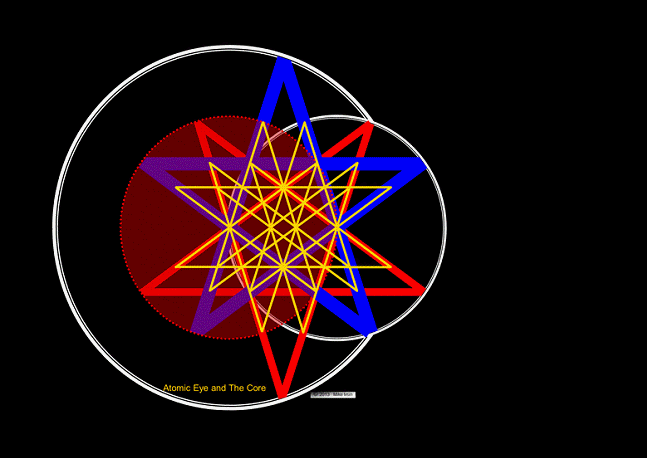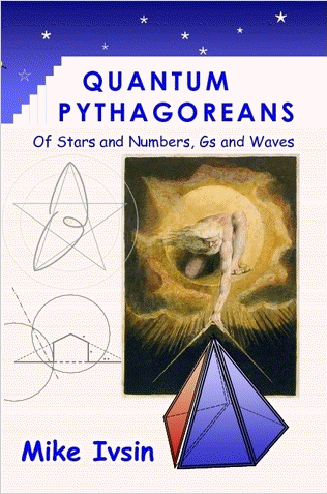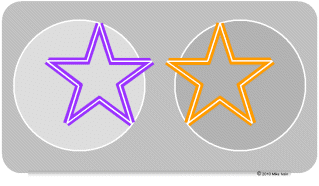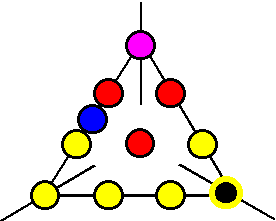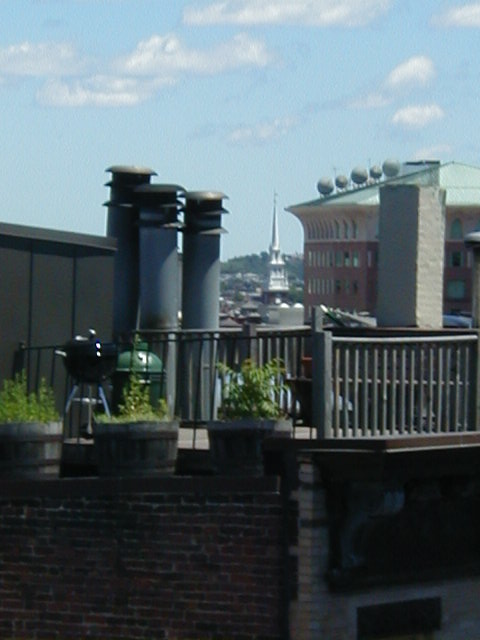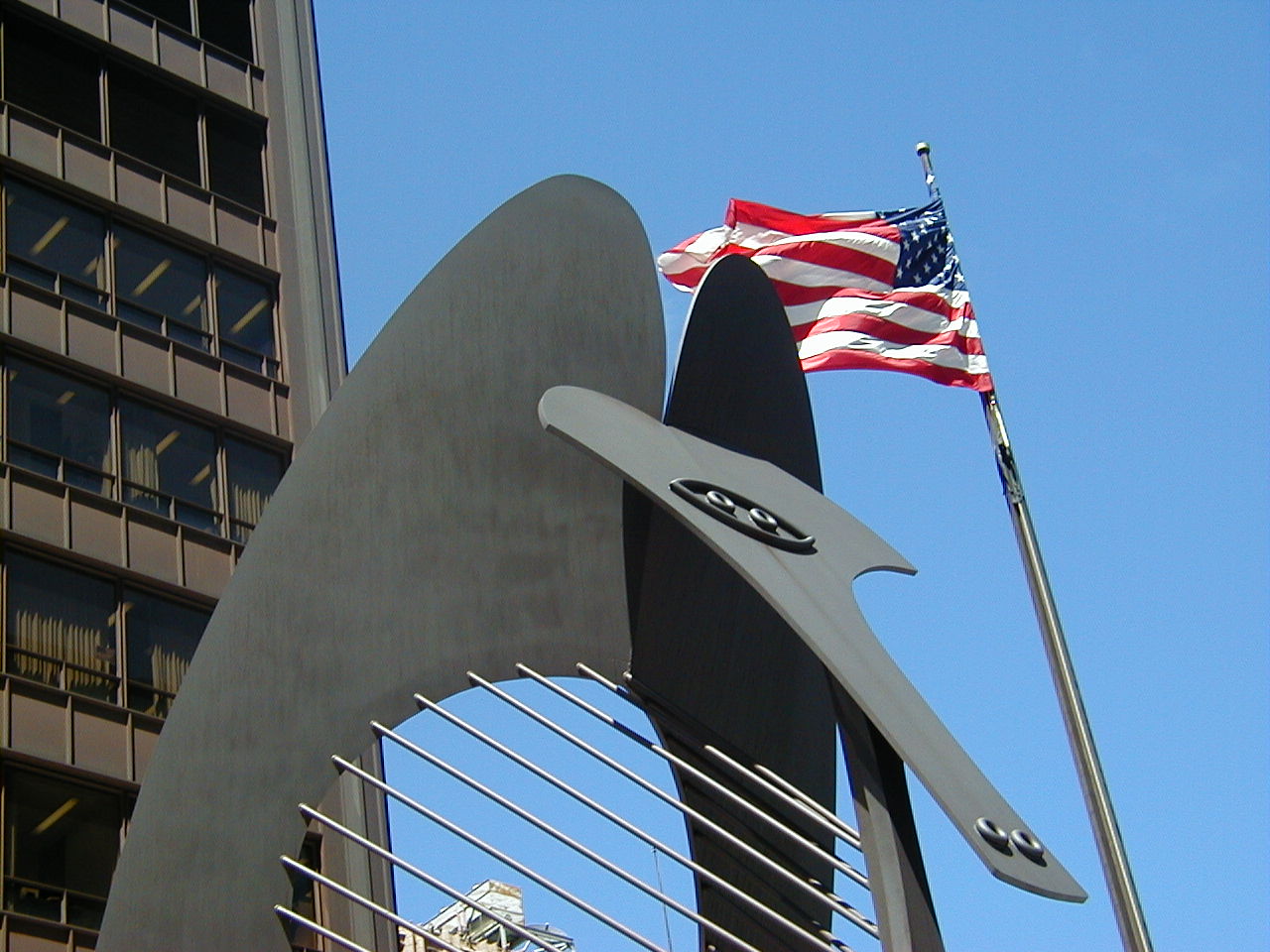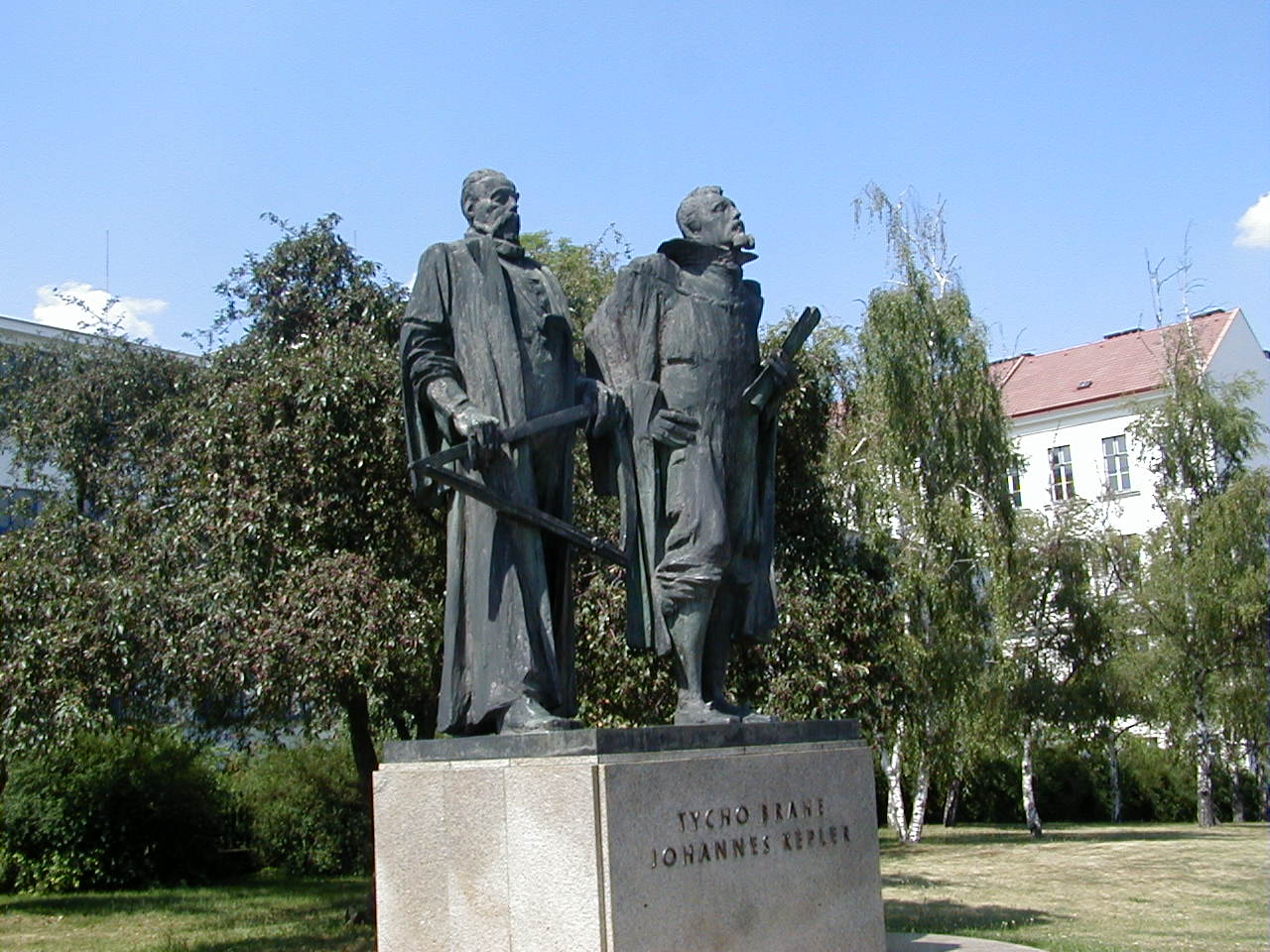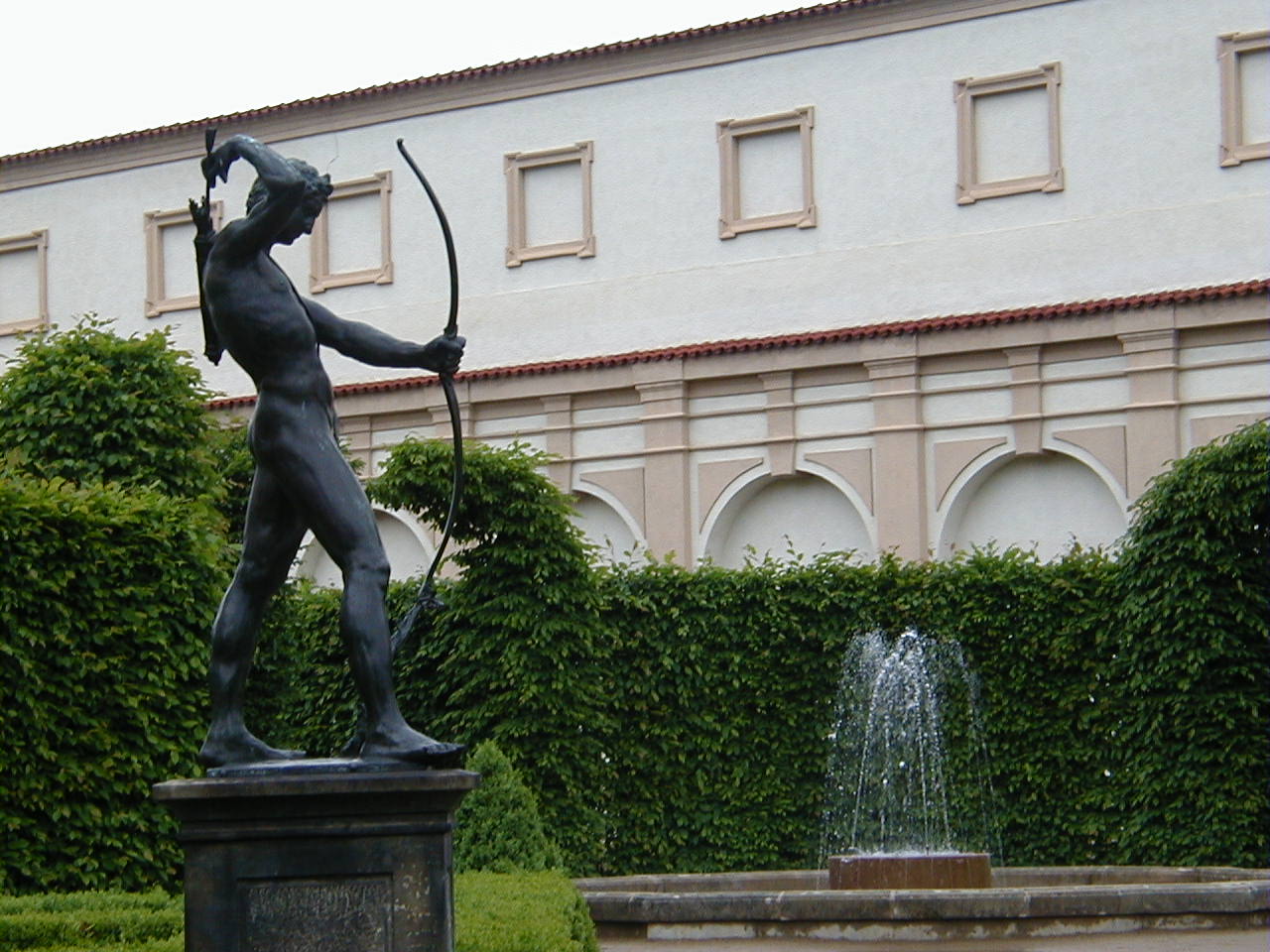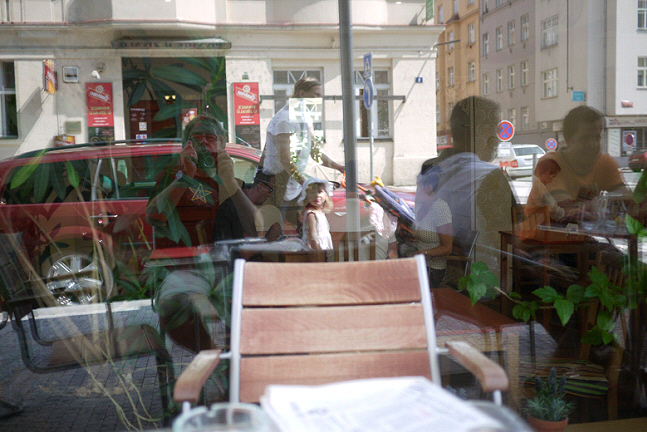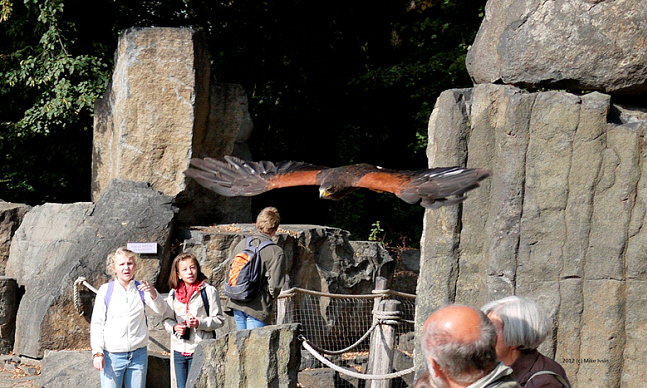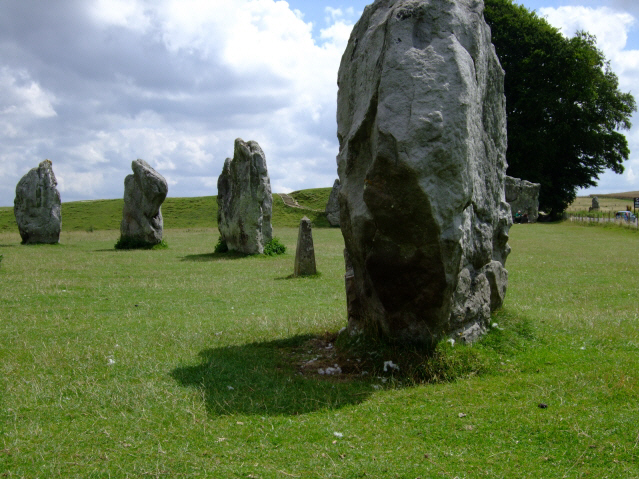|
|
|
|
|
If we cannot create and direct gravitational force we are but a stepping stone Gravitation manifests as force acting among each and every atom. Standing in the accelerating rocket, the force acts only on our feet and the force from the rocket's acceleration is not the same as the force of gravitation. Inflated beach ball squishes and deforms under acceleration in the rocket ship but the ball becomes nice and round when the ship stops accelerating -- even if the ball continues to be attracted and accelerated by the earth's gravitation. Acceleration cannot be equated with gravitation. Open this page in its own window |
Daaad...
Yes, Virginia.
When the parachutist is free-falling, his speed gets faster and faster but there is nothing pushing down on his back.
I think you've got it. Now tell me: 'In the rocket you get pushed into your seat but would a person get hurt if speeding up in gravity of ten, hundred times as much?'
He would not — but then, if there is nothing pushing on the person, why cannot he just go up?
Yeah, you are ready for Concept One.
|
The
book you will thoroughly enjoy After sloshing through noise all day, rebuild with the fundamentals |
|
"Neutrinos go through you, through this planet, through suns -- and there are trillions of them. Isn't science great?" -- Yes, you must be kidding. Even if that is what neutrinos do, so what. The real truth is that scientists make a big deal out of very little and you are paying for it. In October we looked at the intro to neutrinos. It's fun, it's rewarding, and it will not raise your taxes. This topic comes in two parts, and here is the second one.
"You know the radius of a circle from which a star is made. The math guy should now tell me the distance between the points of the star." -- Yes, that is what math guys do best. But what if the exact division of a single circle is really about a very rudimentary star formation, particularly because planetary pairs and several atomic orbitals also make stars? In September's DSSP topic we look at a new and simple reference to use when constructing a star -- and this would be good for stars in macro and micro.
"OK, symmetries are pretty." -- And there is more than one. It could be about a duality if there are the feminine and masculine components. Yet symmetries could be the most primary properties that are much ignored in physics
the even symmetry is about energy
and in our July DSSP topic
"Politicians talk about everything and then they can talk about science." -- Not really. Politicians have their own agenda and if a politician talks about nature, it just does not mesh. In our June 2012 DSSP topic.
"The photon pings the electron and the electron just flies off." -- That is in essence what Einstein said to explain the photoelectric effect -- with equations and all. But this proposed mechanism and the equations ignore the conservation of momentum. If you figure this out in May's 2012 DSSP Topic, does it mean you are smarter than he is? No. Einstein is for kids.
"The eye can be used constuctively and or destructively." -- I don't know what this is about but it is April 1 and the ancient Egyptians are on the record talking about Seth and Horus and how and why the fight for the kingdom turned out the way it did. In April's DSSP Topic we look at the eye, again.
"When I use my computer to calculate the force, my computer doesn't move." "What?" -- I know, we are so used to thinking of computers as machines that compute but do not actually physically deliver what they've just computed. Maybe it is time to rise our expectations of our computer a bit. In March 2012 DSSP Topic.
"Use your head." -- How silly of me, I did not mean it physically. But if I clarify it by saying to use both of your heads, it's just as silly. In February's DSSP topic we look at both halves of our brain and how they each work differently and separately. And if they can find a way to work together you self-organize, too.
"Electron is a particle and so it cannot split going through two slits." -- Professors give you smug answers and then they want to get paid for that. Experimentally, an electron and a photon produce the same pattern but that does not seem to bother them. If you heard or read the musings, stop by at our explanation of an electron encountering two slits in January DSSP topic.
"Light exerts pressure." Not in nature but by a state university professor. -- Professors have it difficult. The economy is tanking and this person anonymously talks about physics because, well, somebody has to make it worse. Using public money, of course. In December 2011 DSSP topic we look at the University of Illinois' incompetence in more ways than one.
"Can things disappear and appear again, good as they were? -- Musing on disappearing things in November 2011 DSSP topic.
"Witches or Wicca. It's the old wife's tails of beliefs." -- Except that the 'opening' and 'closing' of stars corresponds to 'harmonious' and 'disharmonious' pairs of notes. Yeah, witches don't really explain why they do it some certain way, but it works for them and now there is an explanation. Witches do it with a pentacle and now I extend it with a ten pointed star. All in October DSSP topic section
Platonic solids can change from one to the next -- It does not seem that way but, for example, a rotation of a cube results in a hexagon. Because viruses are shaped as an icosahedron (a 20-triangle solid), this topic has some urgency and in September DSSP we look at the octohedron
Stars are presently defined without applications considerations -- That's changing. We offer a new definition of a geometric star and start with the one made with concentric circles. Yes, this is about the orbits and the stars that are made with them. The first star is from orbits and its definition is split between June and July DSSP topics. -- That has changed. This topic is now complete with the star made from non-concentric circles. It's about multiple atoms making a molecule. In August 2011 DSSP topic.
"Stars are pretty and all that but is there more to constructing them?" -- But of course, and it goes along with the exactness of the construction. All energy is wave based. Energy waves can be straight but if you want them to stick around they have to close in a circle and acquire symmetry about a point. But only wavelengths of some multiple can close about a geometric point. 24 point and 16 point stars are each constructible exactly but in this month DSSP topic we offer one construction that creates both stars. And so it happens that the two star points are in the 3:2 ratio -- a nice musical ratio.
"Make the 5-point hyperstars from interlocking rings." -- Dividing the circle by 5 exactly goes back to Euclid and possibly Pythagoras but making the perfect 5-pointed star from two interlocking rings is recent and ours, too. As you make the 5-point or 10-point hyperstar you will also end up with a bunch of other geometric components the likes of lunes, circles, and triangles. Now, make art with it: Kick it off in January DSSP topic.
"Count points on a star and you will always bend your path as you go from one point to the next." -- Keep bending in one direction and the star is convex. But reverse the direction and the star is also concave. This is how it is is from the day the scientists started classifying stars. Ok, but it doesn't work on our hyperstar. In December's DSSP topic we give the scientist the finger once again (and as usual) and show that the hyperstar is neither convex or concave.
"Sending an eye? Yeah, first class." -- We've got something on 'sending an eye.' It happenned in ancient Egypt and because it's posted April 1 you can take it or leave it.
"Future time is not linear? Yeah, warp on." -- You want to foretell the future. It is about the infinity of variables doing their thing. Yes, it can be managed. In our July '09 topic.
"I don't believe anything posted on April 1." -- Maybe we don't want you to believe what the Sphinx is about.
Select another
topic from the gold post
About gravitation: You may follow the main path starting with Concept One, or pick the topics below as the spirit moves you
"Gravitation is about warped space. That's all I know." Not so. Although a warped mind produces warped theories, you will want to do better than that. Get going with pictures/slides that sum it up. Then you firm up with basic concepts that will enable you to go for a spin, and zoom up and down the scale of the universe. Not a bad start. If you feel up to a full dose of gravitation, invite a bunch of QM gravitation ideas and see if you can sort them all out. Think of it as the readiness test for the diamond run. If you crash, take time to pick up the pieces and try again, faster than ever.
Gravitation attracts -- And we have equations, too. So why is it we still don't understand it? If gravitation issues from computable relationships among matter's components, let's find them. We put down some of gravitation's components in our April 2008 DSSP topic.
"Inertia is a force that resists a change of a body's speed or direction. But when the speed approaches lightspeed the inertia becomes nonlinear because mass increases." -- This is the case for about a hundred years. Yet it is incorrect. You want to know how the energy conservation works and then you'll know mass has nothing to do with it. It's about the wave and you'll begin to like waves after this July '10 DSSP topic.
"Get this. If two waves add up to zero, where did the energy go?" -- They sure add up to zero. But you know your geometry and there is the up-down direction as well as the direction going along the motion of the wave. And so we take a more general look at waves adding to zero in June '10 DSSP topic.
"Smart atom? Neah, atoms can be smashed to pieces." -- Well, so can you. But if the construction of an atom takes a lot of smarts then such inteligence could be in the atom. And in the solar system. And .. .. In May 2010 DSSP topic we look at the intelligence of your everyday rock.
About
energy: "I love frequencies. Some can even be mysterious." -- Before you get excited by frequencies you want to know something about such a complex topic. In our December DSSP topic we put some structure into it and sum up the multitude of frequency sources. Happy New Year .. -- You will need multiple frequencies if you want to create something from nothing. Well, the nothing is nothing in the material sense and you'll have to put it together logically first. In our first 2010 DSSP topic.
"Energy comes from heat, light and moving things. Healing energy is for, well, gee, I don't know." -- Scientists can put a number on your everyday energy but they are clueless when it comes to energy associated with knowledge, for example. So we call on Pythagoras to help us with a different ways of classifying energy in three montly installments from February through April DSSP topics. You guessed it, it's about the dimensions of independence.
"Electron is like a little bouncing ball. A very little bouncing ball." -- But an electron can also become a wave. Okay, you knew that but does the electron physically spread and then reduce again? Yep, nothing's forbidden about that and in our September, October and November '09 topics we ask you to apply it in the most unusual place -- your body.
"Virtual numbers are imaginary numbers. Curious, but that's about it." -- Not so fast. Virtual numbers come from the square root of minus one. They are curious because they've been around for a thousand years but nobody could make much with them or of them. This month we bring the virtual and the irrational numbers together to see how they play. You might guess this month's DSSP topic is about the physics of a photon and you would be right. But the virtual numbers also make a domain of their own.
"Pentacle is for witches." -- Yes, it is. There are also guys who get really self-righteous speaking of evil pentacles. They foam at the mouth and speak of the end of the world so much you'd think they'll sprout horns any minute now. So, February DSSP topic is about creation of a pentagram from a brand new pentacle -- and it is about the workings of a gas molecule. Don't expect the antichrist predictors to calm down, though. Anybody speaking about dogma cannot calm down simply because they don't know any better. Smile and keep on creating.
"Circles are easy." -- It surely seems that way. But once you find out you cannot make a perfect circle from a real thing such as your rubber band, the circle becomes a bit more mysterious. In our September '07 DSSP topic we talk about the energy and the perfect circle -- and the stars, too.
|
|
About
Light: Can you reverse light mill rotation without magic? -- In your freezer, of course. Here is the original discovery followed closely by instructions. There is magic you can do with a light mill, but not in this simple rotation reversal. This cool experiment is on the 'Stump your teacher' page .. "Scientists talk about photons like grade school kids." -- and we agree the scientists haven't grown up. When it comes to photons, scientists just cannot get over playing in a sandbox. So we put it together in theXperiment: One says light puts pressure on a mirror, the other says no way. Yes, we want you to leave the sandbox.
"Photon is like a little bouncing ball. A very little bouncing ball." -- Did you really pay money for the photon-bouncing-ball nonsense? That's fine by me if you like to work hard and fool yourself. But if you like a proven experiment to take you straight to the fundamentals then in our August '09 topic you will find your time well spent.
"Light is pretty and it moves things." -- It does, but .. .. don't jump to conclusions. At absorption a beam of light can produce motion but at reflection there is no motion. Before you think you know just about everything about light, stop by at the November's DSSP topic and figure out what light is really about.
"So what if your left hand and your right hand reverse in the mirror -- I can still shave all right." -- Maybe (try tying your tie when looking at your hands in the mirror). The symmetry is rudimental and it is also fundamental. Your camera lens has the odd symmetry about a point but in the February's DSSP topic we look at the even symmetry -- the symmetry about a line. The constructs of symmetry are based on numbers but we want to make something out of them. The even symmetry could be both pretty and forceful.
Photon can be stretched, repeatably reshaped and its undulations increased in count -- but the photon's energy stays the same. -- Photons can and do amazing things but after a shape-shifting show their energy stays the same. How do they do that -- I mean, how could a photon keep its energy the same? In our first 2008 DSSP topic.
"Photon bumps an electron from its orbit and that is why photons have momentum." -- No kidding? A single photon could then trash the whole atom, eh? There is a bit more to this (really two bits) and we take a look at two kinds of photonic interactions in our February DSSP topic.
"There are no dogmas in science. We explain everything." -- That may be what the scientist will tell you. But there are things the scientist will not touch even if his life depended on it. A taboo protects a dogma because a scientist really cannot handle the truth about light. When it comes to measuring the pressure the light beam is supposed to put on a mirror at reflection, scientists will scream bloody equations and twist their face -- but they will not do the experiment. Not only are they plain wrong about light's pressure but their precious equations have no intrinsic value either. In our August DSSP topic we leave a scientist behind.
"Since photons of light do not put pressure on the surface of a mirror, how could photons make their presence felt?" -- Photon's absorption happens in a particular context. To begin with, you will need two objects because the momentum is conserved. But once you understand the mechanism you could take steps to protect yourself from hard radiation. In September '06 DSSP topic the photon's reduction happens and does not happen.
"A photon can be cut in half and Compton got a prize for that." -- He got a prize all right but the photon cannot be cut with or without the prize. A photon can do wonders and one of them is that it can stay together no matter what prize you bestow upon the guy trying to cut a photon. We look at a branching photon in our DSSP focus.
NASA scientists would not direct a beam of laser light against a mirror to confirm the presence or absence of light's pressure. NASA scientists and managers found it easier to stay away from facts and forget about the pursuit of objective and real physics — they found simpleton gravitation theories enchanting and missed the truth about light. Over the years and into the present, government scientists publish the results of pretend physics from which they fund their wishful thinking -- Link up to Devil is in one detail editorial. Our Y2K problem is about a problem lasting 2K years: Solar sailing is wow but it does not work and never did. Our solar sailing 1999 essay brought light's inability to push sail into the open.
Photon of light changes its path going through a prism but its wavelength does not change. That is the case from the days of Newton but what if the prism or the light source is moving? -- It is high time to generalize this classic experiment. Do the photons of light change their wavelength (their color) when light passes through a moving prism? After all, some physicists are calling it the blue or the red shift. So, is it the color or is it the path that changes as a result of a moving prism? Go with your instinct and save a call to your mainstream physicist.
What if starlight from a distant star is bent by the sun's corona and not by gravitation? That is indeed the case. Now, do you want to remove this monkey wrench out of scientists' heads or do you want to take advantage of the truth? We get over the shortcomings of the 1919 starlight bending measurement, revisit Newton, and take a working look at the corpuscular photon of light.
You just thought of a way to make a perpetual motion machine -- If light exerts pressure at reflection, let it do work over and over with parallel mirrors! Yeah. There is nothing simpler than that. In August '06 DSSP topic we will see where the logic fails -- and let the mirror chips fall where they may.
How can light slow down and then speed up just like that? How can light accelerate without any extra energy? -- Light is a wave and it always propagates in a medium: glass, gas, water, ether, plasma. Scientists cannot vacate ether and are hiding under a rock doing the next worst thing: denying it. Photons propagate computationally and instantly change direction or speed. Photons of light have no mass or inertia but photons have another set of characteristics the likes of instant action..
"If photon pushes things around then by the end of the day we have one tired photon." -- It is easy to give away the Nobel Prize to Compton, but there is no merit behind the prize. Just spelling 'committee' right is what's left of Nobel after this photon collission. In April's DSSP topic we look at the systemic view of light -- from photon creation to transformation and back again.
You can have a meatball but now you have to eat it, too -- Nobel started with a bang but making meatballs out of photons does not improve the Swedish cooking tradition. Compton Effect Is a Defect makes you wonder how they cooked the books
Part it once and move it apart, part it again and move it together -- Put a photon through its quantum mechanical paces and bring it back together. Newton would approve.
Try negative probability for size -- you may like the overall positive energy -- You learned that photon's energy is different coming and going. But you want to revisit the photon's wavefunction because the frequency of photon's wavefunction undulations just may be about something other than energy. That is, a photon's wavefunction shape is not the same thing as its frequency. Photon's energy is the same, coming or going A photon of light is the vehicle that brings quantum mechanics to the macro scale. It is for this reason a photon as pure energy with even symmetry is constantly under-appreciated. A photon gets a special treatment in the book. It has no specific chapter but is talked about throughout the book in different contexts. One time it interacts with atomic electrons in a prismatic refraction mechanism. Another time it interacts with the core doing damage. Then again it binds an electron healing antimatter. With a half way mirror a photon parts and stays interconnected, technically forever. That's the only way to see the light. Continue ..
|
|
Totally
Cosmic: Is it a revelation that Earth and Venus can be merged into a single body with a unique and repeatable orbit? Ditto for Neptune-Pluto? If you throw Pluto away you cannot play musical orbits. If Earth and Venus together create a pentagram, there is a way of calculating the two orbital radii that produce the pentagram? -- Cosmic section: New Star In The Heavens celebrates the five point star. Neptune and Pluto make a star, too – two-pointed, that is. Fibonacci keeps adding stars if the golden ratio holds
Want to haul things into orbit using but an elevator? -- Every satellite must acquire certain angular velocity in addition to elevation. NASA ignores angular momentum and claims that going straight up in a space elevator is all that is needed. Why supply angular momentum if you can pay for the clowns and hand out candy to little taxpayers? We also have an update, Space Elevator 2, with illustration. "And it all came tumbling down."
Why argue about ether if you can just go ahead and use it -- How ether got evacuated is a funny story, particularly if it is done by scientists who will never be able to go there. The thing is, light is not the only entity that uses ether for propagation. Here, have some light with ether on top! We need ether not only for philosophical discussion but for free energy and hyperflight.
Notes of the heavenly spheres still playing -- A different note of the musical octave was given to each planet during the Renaissance so the planets could play. But it is about the musical ratios of the orbits of planets and moons that's the real composition.
|
|
On
time: "Time is like a father figure. It goes on and on and it is very reassuring to me." -- Get with it. Time is not an independent dimension and never was. Nothing subordinates itselt to time. Yes, planetary orbits are stable and time can be used to make a planet prediction but it is always other things that create time. Oh, time is recorded with all other things and is the part of the recorded history and knowledge. In our June '09 we give time a role on getting to the truth.
"So what a time machine looks like an antique phone booth. I like time travel." -- The looks of a time machine can be improved all right, but don't be surprised if it still doesn't work. In our May '05 topic we look at time travel and the memory of the universe.
Yikes! Time is always a derivative, always follows, and can be anything? -- Yes to all three. The 'anything' part includes zero. On top of that, time is never an independent variable and time never leads. What it means for time to be derived. Buddhists figured it out already: time exists by convention.
Can you construct the absolute clock even though time is zero during nonlocal events? -- Absolute clock construction gets into that and makes discontinuous events just normal events -- on macro scale, no less
Are you ready to solve the problem of simultaneity or do you prefer to muggle? -- Three guys on a train solve the mystery and one theory gets thrown overboard. The train conductor and his two cohorts get to synch up absolutely in the lightning hits the train topic. The illustration there can be copied (illustration is released from copyright and is in public domain).
Want to manipulate time and get physically into the past? To borrow a phrase from Nick Lane, ".. the truth is rather more complicated but far more interesting." On this site the fundamentals of time are discussed but the only people who can understand it are those who know there is no such thing as black holes -- Get into black hole detox. Keep your mind and body straight by reading a few articles on light, summarized above. The experiment cruces -- which can be performed for forty years now -- is whether photons of light can move a mirror at reflection. Finally, begin to think about time via the concept of the leading and following variables -- time is always a derived variable and cannot be generalized in and of itself
|
|
from Boston:
One if by land.. from Chicago: Picasso at Dailey Center:
from Rhinebeck NY:
Great War Soldier. Possibly
the most moving statue of a soldier. Needs to be placed at ground
level, closer to you: from Prague:
Tycho Brahe and
Kepler. One politically correct, the other not: from Prague:
"Secret Garden" from Prague:
Take in a street scene from Prague:
Bovine Matrix.
Bovine invasion 2004. Baroque Loretta in the background has real
bells, though from Prague:
In the Zoo you may
come upon some interesting shows. But if you take a picture of it,
you might find out why the bird just doesn't fly away: from Austria:
On the way to Bad
Ischl. The Austrian Alps come on quickly along with lakes, islands
and castles, of course. Unless you are running alternate fuels, it is
better from the train: from Austria:
Schauberger house.
Shauberger legacy is about geometry and the PKS sign is bit cheezy
(should be spelled out for what it is: Pythagoras, Kepler and
Schauberger). But neither the house or the man are going away: from Avebury Circle, England
Digging just a
little bit deeper, the amorphous (chalk) sub-soil does not reveal the
feminine or masculine anything. So it is up to you...
No heavy machinery
here. The downward slope goes toward the inside of the circle. Last update Feb 20, 2013 © 1999-2013 by Backbone Consultants
|

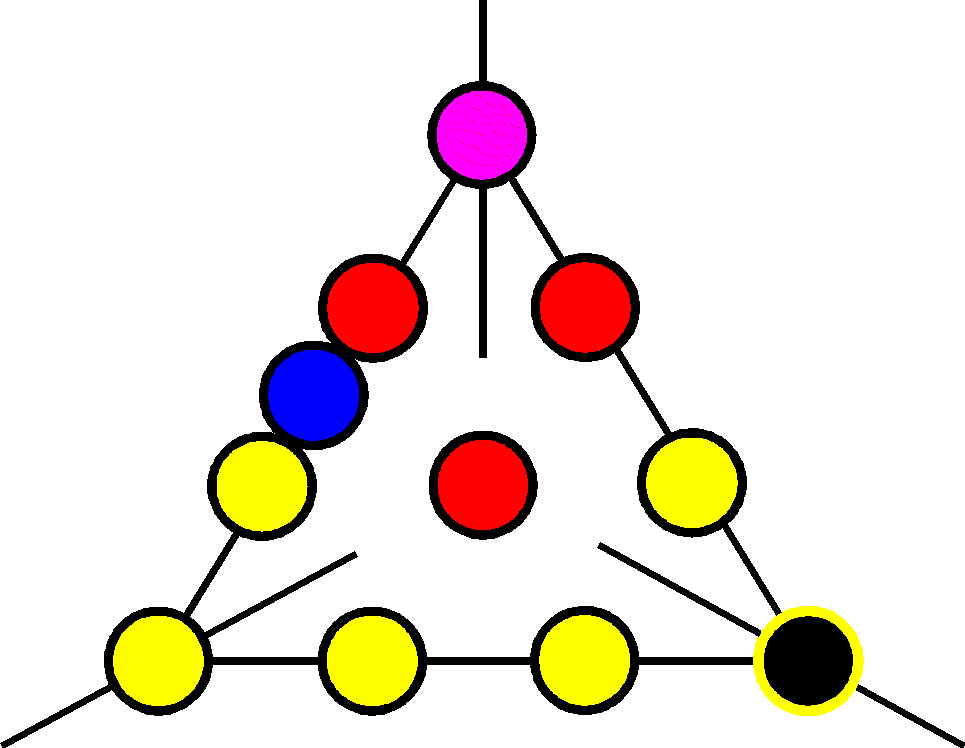 ®
®